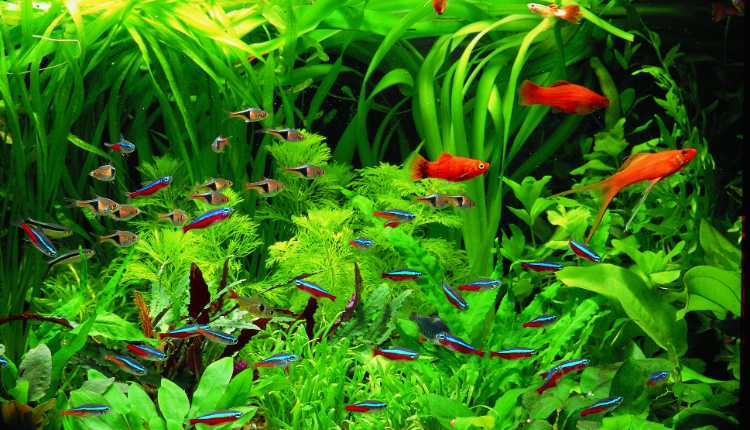Having live plants in your aquarium has always been a good idea. And there are several reasons to prove this statement about aquarium plants, as they help in
- Control algae growth
- Oxygenate the water
- An alternative source of food for your fishes, and
- Add stability to the substrate.
Of course, they create a natural-looking habitat and provide a safe place for shy and timid fish to hide.
One of the best options to recreate a natural environment for your fish is green plants for aquariums. Also, to enrich the beauty, plants help form a mini-ecosystem within the aquarium and combine with rocks, small logs, gravel, etc. To grab this, we are here with some knowledge to choose the best and fast-growing aquarium plants for the home that will fill your tank with natural lush.
This article presents you ten best and fast-growing aquarium plants that will fill your tank in no time. So here we go-
1. Java Moss
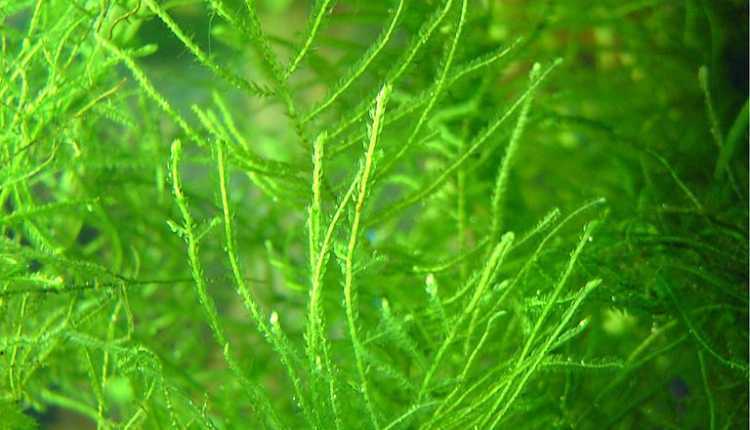
- Scientific name: Vesiucularia dubyana
- Common Name: Java Moss
- Temperature: Between 18ºC to 26ºC
- pH: Between 6.5 and 8
- Difficulty level: Very Low
- Growth, height: 5 cms
The Java Moss has its scientific name Vesicularia Dubyana. We can find this freshwater aquarium plant in Southeast Asia, specifically on Java island. It adapts so well to aquariums and very easy to plant, making them suitable for any beginner that has gained popularity worldwide.
It covers any surface at the bottom of the aquarium, and hence it is called a cover plant. It can reach a height of approximately 8 centimetres. As they grow, they form thick clumps. The dense and fluffy appearance that Java Moss has, create a much more natural beauty to the whole. Its growth is slow at first, then it accelerates its growth speed after the acclimatisation period and completely covers any aquarium in no time. It is a freshwater aquarium plant with a slightly acidic pH between 6.5 and 8 and hardness between 10 gH and 12 gH.
You will also love 13 Deadly and Beautiful Plants you Should Avoid to Grow Your Garden or Home.
2. Amazon Sword
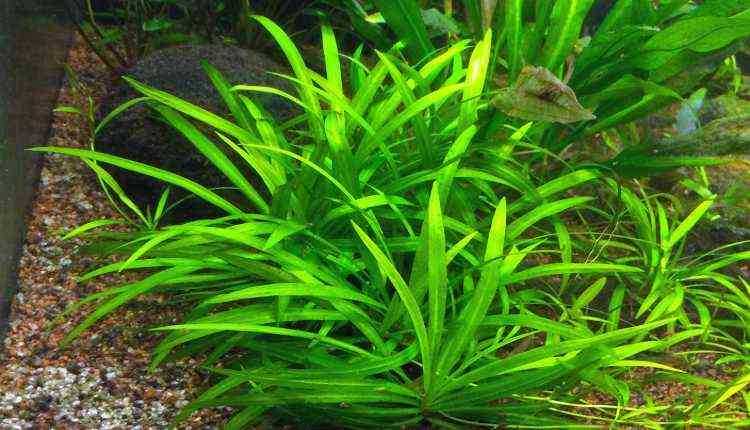
- Scientific name: Echinodorus Grisebachii
- Common Name: Amazon Sword
- Temperature: Between 16ºC to 28ºC
- pH: Between 6.5 and 7.5
- Difficulty level: Easy
- Growth, height: 40 cms
The sword of amazon, or by its scientific name Echinodorus Grisebachii are great consumers of nitrogenous compounds that help maintain the water parameters properly. They are the plants found in South America, with more than 50 different varieties known to date.
The plant got its name from the large sword-shaped leaves and also one of the fastest-growing plants. They are one of the best options for large aquariums due to their large size. Depending on the variety, we can find Echinodorus with a height and width ranging from 20 to more than 50 cm. Its different kinds are mainly differed by the shape and pigmentation of the leaves. A small variation in the colouration also plays a significant role in dividing them.
While talking about its maintenance, it is easy to care for; but we recommend you to prune those leaves that could present a worse aspect. Due to its large consumption of nutrients, water changes at an interval will be good and, as time goes, an extra supply of nutrients is necessary. You can use a thick layer of large grain sand as a substrate.
You will also love Hydroponics: A New shift in Urban Gardening.
3. Ambulia
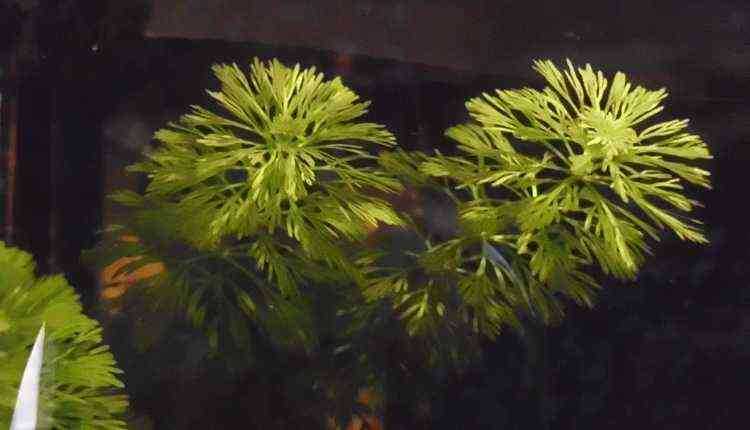
- Scientific name: Limnophila sessiliflora
- Common name: Ambulia
- Temperature: Between 22ºC and 30ºC
- pH: Between 6.0 and 8.5
- Difficulty level: Easy
- Growth, height: Up to 50 cm tall
Ambulia is a plant of the genus Limnophila, and it is so enchanting in the aquarium for its size, colour, and easy maintenance. They are one of the tropical aquarium plants. Ambulia comes from Southeast Asia, specifically from India. Its ability to tolerate different chemical changes in the water make it an invasive plant. And it can also live in lakes, streams, and stagnant waters.
Ambulia is a very leafy plant, and it has a very intense green colour. Regarding its size, it can reach 40 or 50 centimetres in height. The leaves appear on its lateral stems that grow from its main stem’s internodes.
Regarding aquarium conditions, Ambulia prefers soft, acidic, and moderately hard water. You can achieve favourable outcomes with temperatures between 24ºC to 27ºC. The fine gravel should be used as the substrate to grow Ambulia. The plant takes nutrients from its roots and leaves, and it reproduces through its cuttings.
4. Foxtail
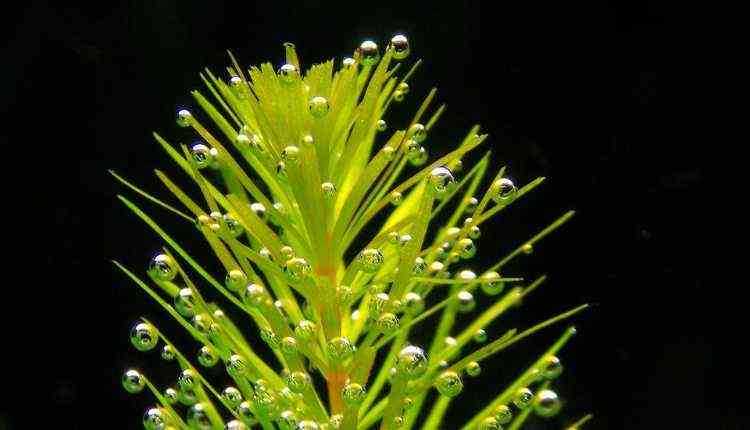
- Scientific name: Ceratophyllum demersum
- Common name: Foxtail
- Temperature: Between 18ºC and 28ºC
- pH: Between 6.0 and 8.5
- Difficulty level: Easy
- Growth, height: 50 cm tall
- Growth rate: Fast.
- Optimal parameters: Soft water (low gH), and neutral or slightly acidic pH (6.5 to 7).
- Reproduction: From the pieces of stem that are detached and from lateral shoots.
- Aquarium zone: Aquarium bottom, middle zone, or floating.
- Lighting: Moderate.
- Temperature: 18 to 28ºC. It can be used in cold water aquariums.
Foxtail or its scientific name, Ceratophyllum Demersum, is an aquarium plant that grows fast, does not require great lighting, and is not necessary to add CO2. It is also one of the tall aquarium plants. Foxtail proves to be one of the beginner-friendly aquarium plants. It is normal to use it as a vertical stem plant anchored to the substrate or a floating plant.
It does not have roots but develops small rhizomes that help it to fix itself to the ground. Bad pieces easily detach from the plant, which will grow into new clones of Ceratophyllum demersum. They generate dense areas of vegetation, ideal for juveniles and small fish.
5. Dwarf Sagittaria
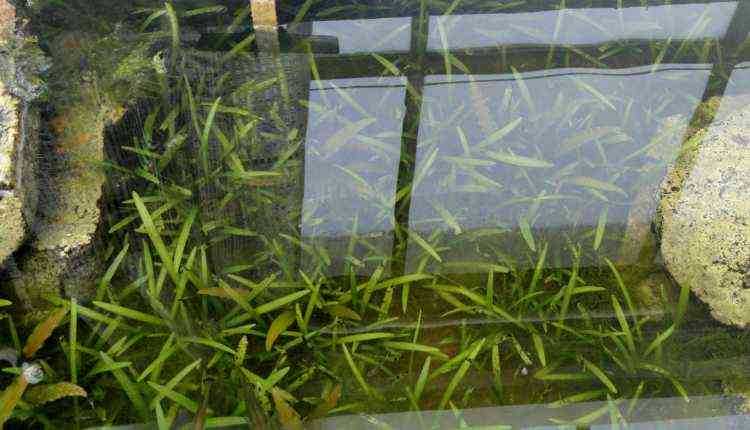
- Scientific name: Sagittaria subulata
- Common name: Dwarf Sagittaria
- Temperature: Between 20ºC and 28ºC
- pH: Between 6.0 and 8.0
- Difficulty level: Easy
- Growth, height: Up to 30 cm tall
Dwarf Sagittaria is an easy-to-maintain, fast-growing, and carpet plant. It is of medium size, and it does not need much lighting or extra CO2 offerings. Moderate to bright lighting is ideal for the plant Dwarf Sagittaria. This plant also holds the name among fastest-growing plants tag.
Dwarf Sagittaria is extremely hardy because it can tolerate broad water parameters. The substrate quickly covers with long, thin leaves that add more height than many carpet plants. You will require to cut it now and then.
6. Hornwort
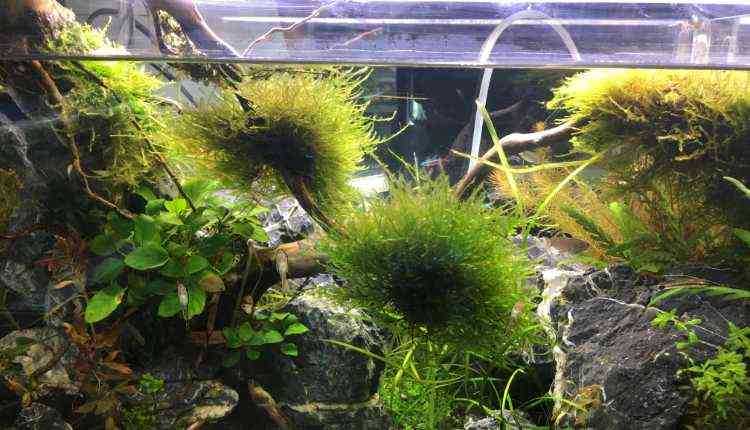
- Scientific name: Anthocerotophyta
- Common name: Hornwort
- Temperature: Between 15ºC and 30ºC
- pH: Between 6.0 and 7.5
- Difficulty level: Easy
- Light requirement: Medium
Hornwort (Ceratophyllum demersum) is a perennial aquatic herb with a very unusual appearance. It is one of the tall aquarium plants that have no roots. Its leaves are more like needles of coniferous trees than the leaves of an ordinary plant.
The hornwort floats freely in the water column or clings to all types of underwater objects and thus takes root. We can call it a tropical aquarium plant as we can find it in tropical regions too.
It can survive in both very soft water and hard water. The same thing applies to temperature conditions. It tolerates temperatures as cold as five degrees celsius and grows peacefully in tropical waters (25°C – 30°C). Hornwort does not need very bright light and can lead to death.
7. Water lettuce
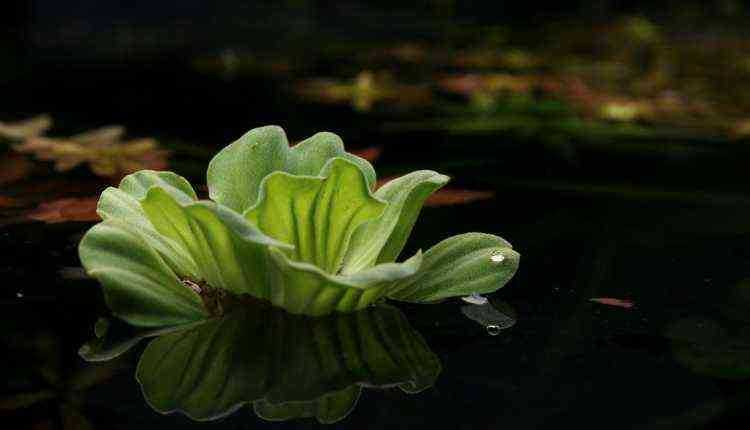
- Scientific name: Pistia stratiotes
- Common name: Water lettuce
- Temperature: Between 21ºC and 27ºC
- pH: Between 6.5 and 7.5
- Difficulty level: Easy
- Light requirement: Low light or shade of light
It is a beautiful aquatic plant floating on the surface and has gained immense popularity. A distinctive property of leaves is that they do not get wet in water. It propagates by lateral layers. It can also blossom under ideal conditions.
It grows incredibly quickly and can completely tame the entire tank in no time. It also remains alive in cold temperatures at 16°C and is considered optimal from 24°C to 30°C.
8. Creeping Primrose-Willow

- Scientific name: Ludwigia repens
- Common name: Creeping Primrose-Willow
- Temperature: Between 23ºC and 27ºC
- pH: Neutral (approx. 7)
- Difficulty level: Easy
In the existing species of this plant, there are both simple and complex specimens. Experts recommend the use of swamp Ludwig for beginners. It has bright green leaves and can appear in a bright tone in very bright light.
Tolerates the lack of light. In this case, the stems are very elongated and lose their beauty. Ludwig does not require water acidity; Its maximum temperature is from 20°C to 22°C.
9. Water Nymph
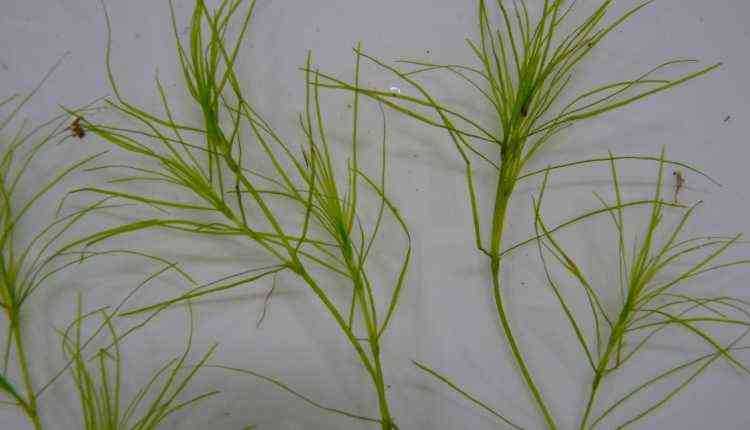
- Scientific name: Najas
- Common name: Water nymph
- Temperature: Between 23ºC and 26ºC
- pH: Between 6.5 and 7.8
- Difficulty level: Easy
Najas, the other popular aquarium plant, managed to capture almost the whole planet’s reservoirs with tropical and temperate climates making it a tropical aquarium plant. We can find some species in a quiet calm place in the Baltic states and many Russia regions. Because of its easy-to-maintain and very rapid growth, it is clear that its plantation is very suitable for every newcomer. You can use it in aquariums without soil.
Water Nymph plant is useful in many ways such that it helps establish biological balance quickly in a new aquarium. It cut nitrogenous compounds into pieces in the aquarium. It serves as a first-class home for juvenile fish. Also, it will enrich your aquarium in no time. It will maintain itself without additional CO2 or lighting. The temperature of the tank should be a minimum of 18 and a maximum of 26 degrees Celsius. Remember, its growth will slightly be affected in very soft water.
10. Carolina Fanwort
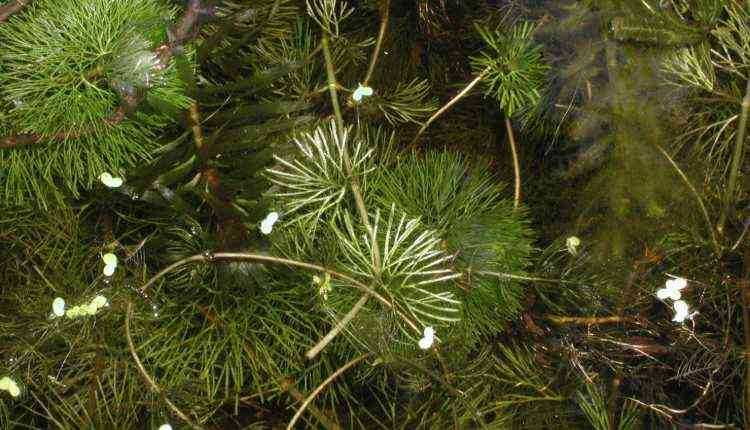
- Scientific name: Cabomba caroliniana
- Common name: Carolina fanwort
- Temperature: Between 13ºC and 27ºC
- pH: Between 4.8 and 7.8
- Difficulty level: Easy
- Light requirement: Medium
Cabomba in the Aquarium looks just gorgeous. This plant requires some care. It does not tolerate the presence of copper sulfate in water. You should remove suspended particles that fall on the leaves using a filter.
The ideal water temperature is 18 to 28 degrees celsius for growing the Carolina fanwort plant. Hardness and acidity should not be above average. Otherwise, this beauty can die, and its leaves begin to erupt. The water must be clean and transparent, as sediment appearing on the leaves not only damages ornamental properties but can also result in plant death.
Conclusion
So these were the best plants to grow as well as fastest-growing plants for your aquarium. For biological equilibrium, it is essential to flourish fast-growing plants in your new aquarium. In my personal opinion, an aquarium is incomplete without plants. And yes, we hope you liked the article and that it helps you take the first step towards how to grow aquarium plants for home.

